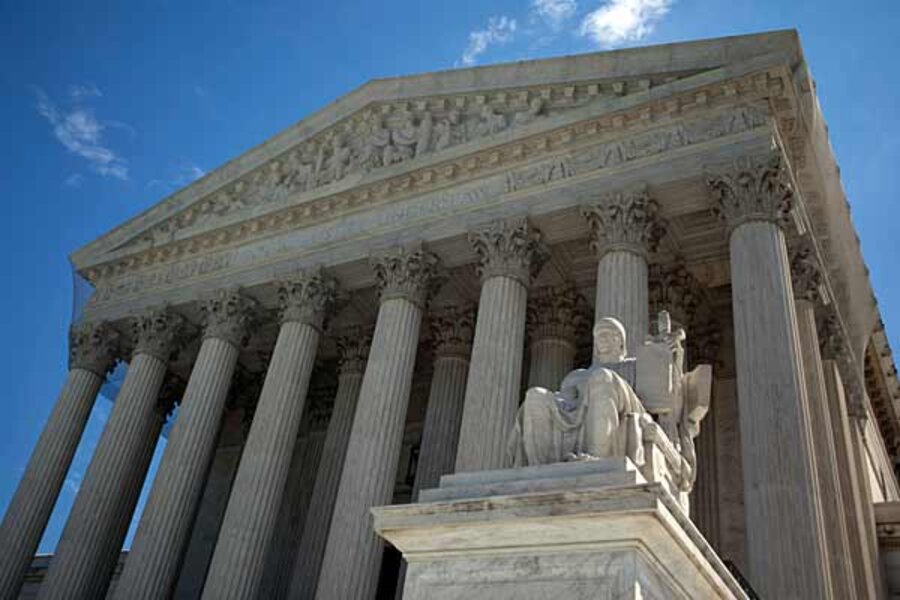Supreme Court allows lawsuits against automakers over seat belt design
Loading...
| Washington
Motor vehicle manufacturers can be sued in state court for installing only lap-type seat belts rather than lap-and-shoulder seat belts in the rear center seats in a minivan, the US Supreme Court ruled on Wednesday.
In a unanimous decision, the high court said federal safety regulations allowing vehicle manufacturers to choose which type of seat belt to install in rear center seats did not shield manufacturers from potential lawsuits filed on behalf of passengers injured while wearing the lap belts.
The action opens the way for a Utah family to sue Mazda Motor of America for fatal injuries from a lap-type seat belt in one of its minivans.
How much do you know about the US Constitution? A quiz.
Federal regulations require lap-and-shoulder belts in front seats and rear-door seats in motor vehicles. But they allowed car makers to decide whether to install only lap-type belts in center rear seats.
The issue arose in a lawsuit filed on behalf Thanh Williamson, a wife and mother, who died because of injuries sustained while wearing a lap-only seat belt.
Delbert Williamson was driving the family’s 1993 Mazda MPV Minivan in August 2002 when a towed vehicle broke loose of a motor home, crossed the highway, and struck the minivan head-on. Mr. Williamson and his daughter, Alexa, were both in seats equipped with lap-and-shoulder belts. They survived the collision.
In contrast, Mrs. Williamson’s seat was equipped only with a lap belt. With the force of the crash, her body “jackknifed” at high speed, causing fatal internal injuries.
The family sued in California court, claiming that Mazda should have installed lap-and-shoulder belts on all seats in the minivan.
Lawyers for Mazda argued that federal safety regulations permitted the installation of either lap-and-shoulder or lap-only seat belts in rear middle seats in minivans. They said the federal regulation allowed Mazda a choice of which belt to install, a choice that preempted the Williamson lawsuit.
A state judge agreed and dismissed the suit. That decision was upheld by the California Court of Appeal.
The dismissing judges cited a 2000 US Supreme Court case in which the high court ruled that a lawsuit seeking to hold an auto manufacturer liable for failing to install air bags must be dismissed.
In that case, federal regulations gave the manufacturer the choice of installing air bags or other alternative passive restraint systems. The Supreme Court ruled that the regulations shielded the manufacturers from liability over which passive restraint system it installed.
The California judges reasoned that a similar choice existed in the seat belt case. If suits over air bags were preempted, suits over lap-type seat belts must also be preempted, they said.
But the Supreme Court disagreed. Writing for the court, Justice Stephen Breyer said the key to distinguishing the Williamson case from the 2000 air bag case was whether a state tort lawsuit would conflict with the underlying federal regulation.
In the air bag case, federal regulators offered car makers a choice in how best to phase-in passive restraint systems that were still in the development phase.
In contrast, the seat belt issue was prompted by concerns that a federal requirement for lap-and-shoulder belts in center seats would not be cost effective. The regulation set a floor, not a ceiling, for safety, and states could enforce a higher safety standard by allowing private lawsuits.
In addition, the government argued that its seat belt regulations did not prevent the filing of a lawsuit seeking to hold a manufacturer liable for injuries caused by decisions to install lap belts rather than more protective belts.
Justice Elena Kagan took no part in the case.





